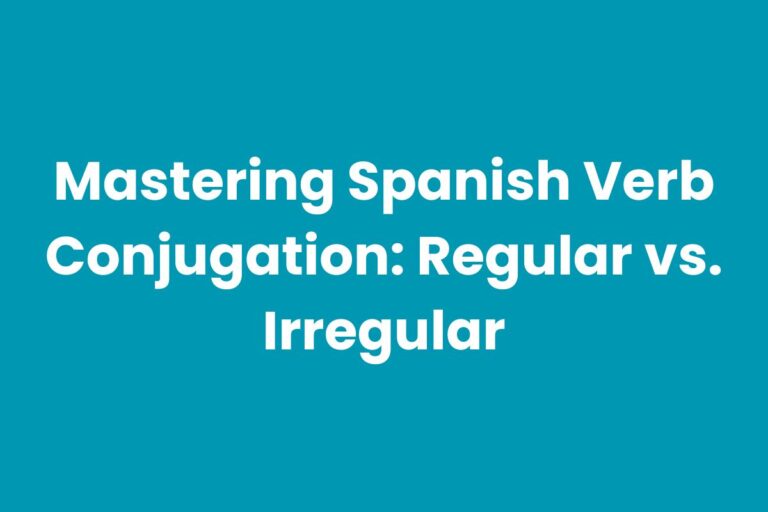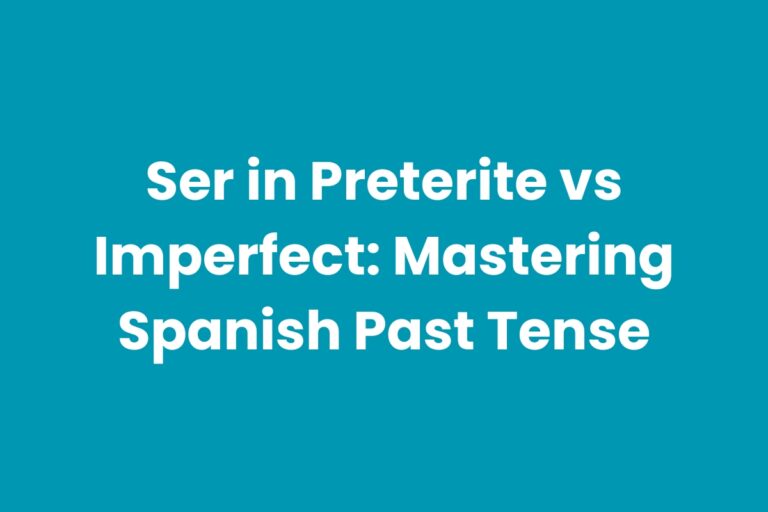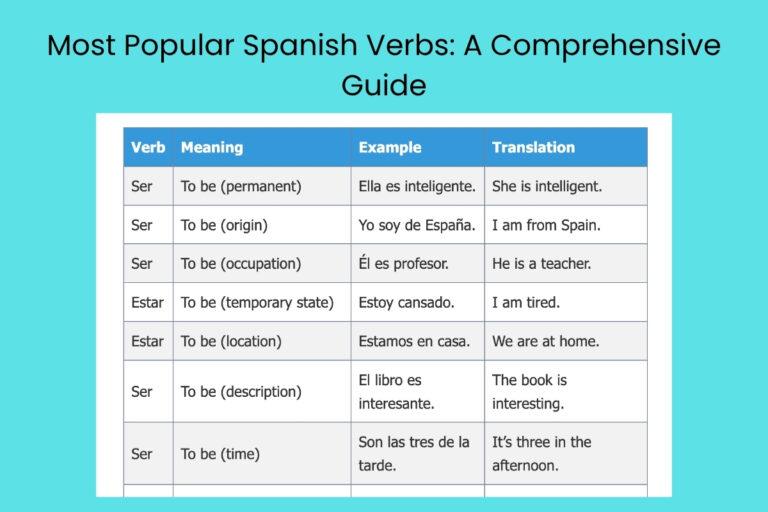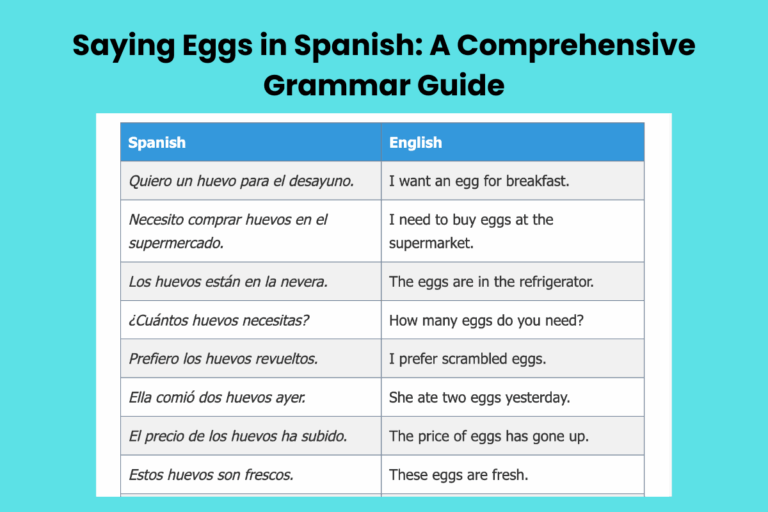Spanish Adjectives Starting with V: A Comprehensive Guide
Understanding adjectives is crucial for describing nouns and adding detail to your Spanish sentences. Adjectives that start with the letter “v” are no exception, and mastering them will significantly enhance your ability to express yourself accurately and vividly in Spanish.
This article provides a comprehensive overview of common Spanish adjectives beginning with “v,” their meanings, usage, and examples. Whether you’re a beginner or an advanced learner, this guide will help you expand your vocabulary and improve your fluency in Spanish.
By exploring these adjectives, you’ll gain a deeper understanding of Spanish grammar and vocabulary, enabling you to communicate more effectively and confidently.
Table of Contents
- Introduction
- Definition of Adjectives in Spanish
- Structural Breakdown of Spanish Adjectives
- Types and Categories of Spanish Adjectives Starting with V
- Examples of Spanish Adjectives Starting with V
- Usage Rules for Spanish Adjectives
- Common Mistakes with Spanish Adjectives
- Practice Exercises
- Advanced Topics
- Frequently Asked Questions
- Conclusion
Definition of Adjectives in Spanish
In Spanish, an adjective (adjetivo) is a word that modifies or describes a noun (sustantivo). Adjectives provide additional information about the noun, such as its qualities, characteristics, or states. They agree in gender (masculine or feminine) and number (singular or plural) with the noun they modify. Understanding the nature and function of adjectives is essential for constructing grammatically correct and descriptive sentences in Spanish.
Adjectives play a crucial role in adding detail and specificity to your descriptions. They allow you to express your thoughts and ideas more vividly and accurately.
Without adjectives, your sentences would lack the color and nuance needed to convey your intended meaning effectively. Therefore, mastering adjectives is a fundamental aspect of learning Spanish.
Classification of Adjectives
Spanish adjectives can be classified based on different criteria, such as their meaning, form, and function. Some common classifications include:
- Descriptive Adjectives: These adjectives describe the qualities or characteristics of a noun (e.g., alto – tall, bonito – pretty).
- Possessive Adjectives: These adjectives indicate possession (e.g., mi – my, tu – your).
- Demonstrative Adjectives: These adjectives point out specific nouns (e.g., este – this, ese – that).
- Numerical Adjectives: These adjectives indicate quantity or order (e.g., uno – one, primero – first).
Function of Adjectives
The primary function of an adjective is to modify or describe a noun. Adjectives provide information about the noun’s attributes, helping to create a clearer and more detailed picture in the reader’s or listener’s mind.
They can also be used to express subjective opinions or evaluations about the noun.
Adjectives can function in two main ways within a sentence:
- Attributive Adjectives: These adjectives appear directly before or after the noun they modify (e.g., la casa verde – the green house).
- Predicate Adjectives: These adjectives appear after a linking verb (e.g., ser, estar) and describe the subject of the sentence (e.g., La casa es verde – The house is green).
Contexts for Using Adjectives
Adjectives are used in a wide variety of contexts to describe people, places, things, and ideas. They are essential for creating vivid descriptions in both spoken and written Spanish.
Whether you’re writing a story, giving a presentation, or simply engaging in a conversation, adjectives will help you express yourself more effectively.
Examples of contexts where adjectives are commonly used include:
- Describing physical appearance (e.g., alto, bajo, guapo, feo).
- Expressing emotions and feelings (e.g., feliz, triste, enojado, contento).
- Describing characteristics and qualities (e.g., inteligente, amable, generoso, egoísta).
- Describing places and environments (e.g., bonito, feo, tranquilo, ruidoso).
Structural Breakdown of Spanish Adjectives
Understanding the structure of Spanish adjectives is key to using them correctly. Adjectives in Spanish must agree in gender and number with the nouns they modify.
This means that the ending of the adjective changes depending on whether the noun is masculine or feminine, and singular or plural.
The basic structure of a Spanish adjective consists of a root and an ending. The root carries the core meaning of the adjective, while the ending indicates its gender and number.
Gender Agreement
Most Spanish adjectives have different forms for masculine and feminine nouns. The masculine form typically ends in “-o,” while the feminine form ends in “-a.” For example, alto (tall – masculine) and alta (tall – feminine). However, some adjectives have the same form for both genders, usually ending in “-e” or a consonant. For example, inteligente (intelligent) and feliz (happy).
Here’s a table illustrating gender agreement with examples:
| Gender | Ending | Example | Translation |
|---|---|---|---|
| Masculine Singular | -o | El chico alto | The tall boy |
| Feminine Singular | -a | La chica alta | The tall girl |
| Masculine Singular (ending in -e or consonant) | -e, consonant | El chico inteligente | The intelligent boy |
| Feminine Singular (ending in -e or consonant) | -e, consonant | La chica inteligente | The intelligent girl |
Number Agreement
Spanish adjectives also agree in number with the nouns they modify. If the noun is plural, the adjective must also be plural.
To make an adjective plural, you generally add “-s” to adjectives ending in a vowel and “-es” to adjectives ending in a consonant.
Here’s a table illustrating number agreement with examples:
| Number | Ending | Example | Translation |
|---|---|---|---|
| Singular | -o, -a, -e, consonant | El libro interesante | The interesting book |
| Plural (vowel ending) | -s | Los libros interesantes | The interesting books |
| Plural (consonant ending) | -es | Las chicas felices | The happy girls |
Adjective Placement
In Spanish, adjectives usually follow the noun they modify. However, there are some exceptions to this rule.
Some adjectives, such as those indicating quantity or quality, often precede the noun. The placement of the adjective can also affect its meaning.
Examples of adjective placement:
- After the noun: la casa grande (the big house)
- Before the noun: un buen amigo (a good friend)
Types and Categories of Spanish Adjectives Starting with V
Spanish adjectives starting with “v” can be categorized based on their meaning and usage. Here are some common categories:
Descriptive Adjectives
These adjectives describe the qualities or characteristics of a noun. They are used to provide more information about the noun’s appearance, personality, or other attributes.
Examples:
- Valiente (brave)
- Vanidoso (vain)
- Veloz (fast)
- Verdadero (true)
- Viejo (old)
- Violento (violent)
- Visible (visible)
- Vivo (alive)
- Voluble (fickle)
- Vulgar (vulgar)
Adjectives of Condition
These adjectives describe the state or condition of a noun. They are often used with verbs like ser (to be) or estar (to be) to indicate a temporary or permanent state.
Examples:
- Vacío (empty)
- Válido (valid)
- Vulnerable (vulnerable)
Adjectives of Origin
These adjectives indicate the origin or nationality of a noun. They are used to specify where something or someone comes from.
Examples:
- Venezolano (Venezuelan)
Examples of Spanish Adjectives Starting with V
Here are some examples of Spanish adjectives starting with “v” used in sentences, categorized for clarity. These tables include masculine, feminine, singular, and plural forms to demonstrate agreement.
The examples are designed to provide a broad understanding of how these adjectives are used in different contexts.
Examples with Valiente (Brave)
The adjective valiente means “brave” or “courageous.” It is used to describe someone who faces danger or difficulty with courage. Because it ends in “-e,” it has the same form for masculine and feminine singular nouns.
| Gender/Number | Example Sentence | Translation |
|---|---|---|
| Masculine Singular | El niño es muy valiente. | The boy is very brave. |
| Feminine Singular | La niña es muy valiente. | The girl is very brave. |
| Masculine Plural | Los niños son muy valientes. | The boys are very brave. |
| Feminine Plural | Las niñas son muy valientes. | The girls are very brave. |
| Masculine Singular | Un soldado valiente luchó en la guerra. | A brave soldier fought in the war. |
| Feminine Singular | Una enfermera valiente ayudó a los heridos. | A brave nurse helped the injured. |
| Masculine Plural | Los bomberos valientes rescataron a la familia. | The brave firefighters rescued the family. |
| Feminine Plural | Las voluntarias valientes ofrecieron su ayuda. | The brave volunteers offered their help. |
| Masculine Singular | Es un acto valiente. | It is a brave act. |
| Feminine Singular | Es una decisión valiente. | It is a brave decision. |
| Masculine Plural | Son hombres valientes. | They are brave men. |
| Feminine Plural | Son mujeres valientes. | They are brave women. |
| Masculine Singular | El perro es valiente. | The dog is brave. |
| Feminine Singular | La gata es valiente. | The cat is brave. |
| Masculine Plural | Los perros son valientes. | The dogs are brave. |
| Feminine Plural | Las gatas son valientes. | The cats are brave. |
| Masculine Singular | Un guerrero valiente defendió su tierra. | A brave warrior defended his land. |
| Feminine Singular | Una líder valiente inspiró a su pueblo. | A brave leader inspired her people. |
| Masculine Plural | Los héroes valientes recibieron medallas. | The brave heroes received medals. |
| Feminine Plural | Las activistas valientes lucharon por la justicia. | The brave activists fought for justice. |
| Masculine Singular | El testimonio valiente conmovió a todos. | The brave testimony moved everyone. |
| Feminine Singular | La historia valiente fue contada en el libro. | The brave story was told in the book. |
| Masculine Plural | Los relatos valientes fueron compartidos. | The brave stories were shared. |
| Feminine Plural | Las acciones valientes fueron reconocidas. | The brave actions were recognized. |
Examples with Viejo (Old)
The adjective viejo means “old.” It is used to describe something or someone that is aged or has existed for a long time. It changes form to agree with the gender and number of the noun it modifies: viejo (masculine singular), vieja (feminine singular), viejos (masculine plural), viejas (feminine plural).
| Gender/Number | Example Sentence | Translation |
|---|---|---|
| Masculine Singular | El hombre es viejo. | The man is old. |
| Feminine Singular | La mujer es vieja. | The woman is old. |
| Masculine Plural | Los hombres son viejos. | The men are old. |
| Feminine Plural | Las mujeres son viejas. | The women are old. |
| Masculine Singular | Este es un coche viejo. | This is an old car. |
| Feminine Singular | Esta es una casa vieja. | This is an old house. |
| Masculine Plural | Estos son coches viejos. | These are old cars. |
| Feminine Plural | Estas son casas viejas. | These are old houses. |
| Masculine Singular | El libro viejo está en la mesa. | The old book is on the table. |
| Feminine Singular | La silla vieja está rota. | The old chair is broken. |
| Masculine Plural | Los libros viejos están en la biblioteca. | The old books are in the library. |
| Feminine Plural | Las sillas viejas necesitan reparación. | The old chairs need repair. |
| Masculine Singular | Un árbol viejo se cayó durante la tormenta. | An old tree fell during the storm. |
| Feminine Singular | Una canción vieja sonó en la radio. | An old song played on the radio. |
| Masculine Plural | Los edificios viejos tienen mucha historia. | The old buildings have a lot of history. |
| Feminine Plural | Las fotografías viejas nos recuerdan el pasado. | The old photographs remind us of the past. |
| Masculine Singular | El reloj viejo todavía funciona. | The old clock still works. |
| Feminine Singular | La llave vieja abre la puerta secreta. | The old key opens the secret door. |
| Masculine Plural | Los puentes viejos necesitan ser renovados. | The old bridges need to be renovated. |
| Feminine Plural | Las historias viejas se transmiten de generación en generación. | The old stories are passed down from generation to generation. |
| Masculine Singular | Este vino es viejo. | This wine is old. |
| Feminine Singular | La tradición es vieja. | The tradition is old. |
| Masculine Plural | Estos vinos son viejos. | These wines are old. |
| Feminine Plural | Las tradiciones son viejas. | The traditions are old. |
Examples with Vulnerable (Vulnerable)
The adjective vulnerable means “vulnerable” or “susceptible to harm or damage.” It is used to describe someone or something that is easily affected by negative influences. Because it ends in “-e,” it has the same form for masculine and feminine singular nouns.
| Gender/Number | Example Sentence | Translation |
|---|---|---|
| Masculine Singular | El niño es vulnerable a las enfermedades. | The boy is vulnerable to diseases. |
| Feminine Singular | La niña es vulnerable a las enfermedades. | The girl is vulnerable to diseases. |
| Masculine Plural | Los niños son vulnerables a las enfermedades. | The boys are vulnerable to diseases. |
| Feminine Plural | Las niñas son vulnerables a las enfermedades. | The girls are vulnerable to diseases. |
| Masculine Singular | El sistema es vulnerable a los ataques cibernéticos. | The system is vulnerable to cyber attacks. |
| Feminine Singular | La página web es vulnerable a los ataques cibernéticos. | The website is vulnerable to cyber attacks. |
| Masculine Plural | Los sistemas son vulnerables a los ataques cibernéticos. | The systems are vulnerable to cyber attacks. |
| Feminine Plural | Las páginas web son vulnerables a los ataques cibernéticos. | The websites are vulnerable to cyber attacks. |
| Masculine Singular | El ecosistema es vulnerable al cambio climático. | The ecosystem is vulnerable to climate change. |
| Feminine Singular | La especie es vulnerable a la extinción. | The species is vulnerable to extinction. |
| Masculine Plural | Los ecosistemas son vulnerables al cambio climático. | The ecosystems are vulnerable to climate change. |
| Feminine Plural | Las especies son vulnerables a la extinción. | The species are vulnerable to extinction. |
| Masculine Singular | Es un punto vulnerable. | It’s a vulnerable point. |
| Feminine Singular | Es una área vulnerable. | It’s a vulnerable area. |
| Masculine Plural | Son puntos vulnerables. | They are vulnerable points. |
| Feminine Plural | Son áreas vulnerables. | They are vulnerable areas. |
| Masculine Singular | El anciano es vulnerable. | The old man is vulnerable. |
| Feminine Singular | La anciana es vulnerable. | The old woman is vulnerable. |
| Masculine Plural | Los ancianos son vulnerables. | The old men are vulnerable. |
| Feminine Plural | Las ancianas son vulnerables. | The old women are vulnerable. |
| Masculine Singular | Un corazón vulnerable puede ser herido fácilmente. | A vulnerable heart can be hurt easily. |
| Feminine Singular | Una mente vulnerable necesita apoyo. | A vulnerable mind needs support. |
| Masculine Plural | Los corazones vulnerables necesitan cuidado. | Vulnerable hearts need care. |
| Feminine Plural | Las mentes vulnerables requieren atención. | Vulnerable minds require attention. |
Usage Rules for Spanish Adjectives
Using Spanish adjectives correctly involves understanding several rules, including gender and number agreement, adjective placement, and the use of specific adjectives with certain verbs.
Agreement Rules
The most important rule is that adjectives must agree in gender and number with the nouns they modify. This means that the ending of the adjective must match the gender (masculine or feminine) and number (singular or plural) of the noun.
Examples:
- El libro rojo (The red book – masculine singular)
- La casa roja (The red house – feminine singular)
- Los libros rojos (The red books – masculine plural)
- Las casas rojas (The red houses – feminine plural)
Placement Rules
In general, Spanish adjectives follow the noun they modify. However, some adjectives precede the noun, especially those that express subjective opinions or qualities.
Some adjectives change their meaning depending on their placement.
Examples:
- Un coche nuevo (A new car – the car is recently made)
- Un nuevo coche (Another car – a different car)
Exceptions
There are some exceptions to the general rules of adjective agreement and placement. Some adjectives have the same form for both masculine and feminine nouns, while others have irregular plural forms.
It’s important to learn these exceptions to avoid making mistakes.
Examples:
- Adjectives ending in “-e” or a consonant usually have the same form for both genders (e.g., inteligente, feliz).
- Some adjectives have irregular plural forms (e.g., feliz – felices).
Common Mistakes with Spanish Adjectives
Learners often make mistakes when using Spanish adjectives, especially regarding gender and number agreement. Here are some common mistakes and how to correct them:
Mistake 1: Incorrect Gender Agreement
Incorrect: El casa blanca
Correct: La casa blanca (The white house)
Explanation: Casa is a feminine noun, so the adjective blanca must also be feminine.
Mistake 2: Incorrect Number Agreement
Incorrect: Los libro rojo
Correct: Los libros rojos (The red books)
Explanation: Libros is a plural noun, so the adjective rojos must also be plural.
Mistake 3: Incorrect Adjective Placement
Incorrect: Coche nuevo un
Correct: Un coche nuevo (A new car)
Explanation: Adjectives usually follow the noun, but in this case, un (a) needs to come before the noun phrase.
Practice Exercises
Test your knowledge of Spanish adjectives with these practice exercises. Fill in the blanks with the correct form of the adjective provided in parentheses.
Exercise 1: Gender and Number Agreement
Complete the following sentences with the correct form of the adjective in parentheses.
| # | Sentence | Adjective (Infinitive) | Answer |
|---|---|---|---|
| 1 | La ______ es muy bonita. (casa / grande) | Grande | La casa grande es muy bonita. |
| 2 | El ______ es muy interesante. (libro / interesante) | Interesante | El libro interesante es muy interesante. |
| 3 | Las ______ son muy amables. (chicas / amable) | Amable | Las chicas amables son muy amables. |
| 4 | Los ______ son muy rápidos. (coches / rápido) | Rápido | Los coches rápidos son muy rápidos. |
| 5 | La ______ es muy inteligente. (estudiante / inteligente) | Inteligente | La estudiante inteligente es muy inteligente. |
| 6 | El ______ es muy viejo. (edificio / viejo) | Viejo | El edificio viejo es muy viejo. |
| 7 | Las ______ son muy pequeñas. (flores / pequeño) | Pequeño | Las flores pequeñas son muy pequeñas. |
| 8 | Los ______ son muy simpáticos. (profesores / simpático) | Simpático | Los profesores simpáticos son muy simpáticos. |
| 9 | La ______ es muy divertida. (película / divertido) | Divertido | La película divertida es muy divertida. |
| 10 | El ______ es muy importante. (trabajo / importante) | Importante | El trabajo importante es muy importante. |
Exercise 2: Using Adjectives Starting with V
Complete the following sentences using an appropriate adjective starting with “v.”
| # | Sentence | Answer |
|---|---|---|
| 1 | El héroe fue ______. | Valiente |
| 2 | La casa está ______. | Vacía |
| 3 | El documento es ______. | Válido |
| 4 | Los niños son ______ a las enfermedades. | Vulnerables |
| 5 | El corredor es muy ______. | Veloz |
| 6 | La historia es ______. | Verdadera |
| 7 | El edificio es muy ______. | Viejo |
| 8 | El hombre es ______. | Violento |
| 9 | La luz es ______. | Visible |
| 10 | El gato está ______. | Vivo |
Advanced Topics
For advanced learners, there are more complex aspects of Spanish adjectives to explore. These include comparative and superlative forms, as well as the use of adjectives in idiomatic expressions.
Comparative and Superlative Forms
Adjectives can be used to make comparisons between two or more nouns. The comparative form is used to compare two nouns, while the superlative form is used to indicate the highest degree of a quality.
Examples:
- Más alto que (Taller than)
- El más alto (The tallest)
Adjectives in Idiomatic Expressions
Spanish includes many idiomatic expressions that use adjectives in unique ways. Understanding these expressions can help you improve your fluency and comprehension of the language.
Examples:
- Ser verde de envidia (To be green with envy)
Frequently Asked Questions
- What is the difference between an adjective and an adverb in Spanish?
An adjective modifies a noun, providing more information about its qualities or characteristics. An adverb, on the other hand, modifies a verb, adjective, or another adverb, indicating how, when, where, or to what extent an action is performed or a quality is present. For example, in the phrase “la casa grande” (the big house), “grande” is an adjective describing the noun “casa.” In the phrase “corre rápido” (he runs fast), “rápido” is an adverb modifying the verb “corre.”
- How do I know whether to place an adjective before or after a noun in Spanish?
Generally, in Spanish, adjectives follow the noun they modify. However, there are exceptions. Descriptive adjectives typically come after the noun, while adjectives expressing subjective qualities or quantities often precede the noun. For example, “la casa roja” (the red house) places the adjective after the noun, while “un buen amigo” (a good friend) places it before. Certain adjectives, like “grande” (big), change their meaning depending on their placement; “un hombre grande” (a physically large man) versus “un gran hombre” (a great man). Learn these nuances through practice and exposure to the language.
- What are some common adjectives that don’t change form based on gender?
Adjectives that end in “-e” or a consonant typically have the same form for both masculine and feminine nouns. For example, “inteligente” (intelligent), “feliz” (happy), and “fácil” (easy) do not change based on gender. Therefore, you would say “el chico inteligente” (the intelligent boy) and “la chica inteligente” (the intelligent girl) using the same form of the adjective.
- How do I form the plural of adjectives in Spanish?
To form the plural of adjectives in Spanish, you generally add “-s” to adjectives ending in a vowel and “-es” to adjectives ending in a consonant. For example, “rojo” (red) becomes “rojos” (red – plural), and “fácil” (easy) becomes “fáciles” (easy – plural). If an adjective ends in “-z
z,” change the “-z” to “-c” before adding “-es,” such as “feliz” becoming “felices.”
Conclusion
Mastering Spanish adjectives starting with the letter “v” is a valuable step in enhancing your language skills. By understanding their meanings, structural rules, and usage, you can effectively describe and add detail to your sentences.
Remember to practice regularly, pay attention to gender and number agreement, and be aware of common mistakes. With consistent effort, you’ll become more confident and fluent in using Spanish adjectives in various contexts, enriching your communication and comprehension in the Spanish language.







